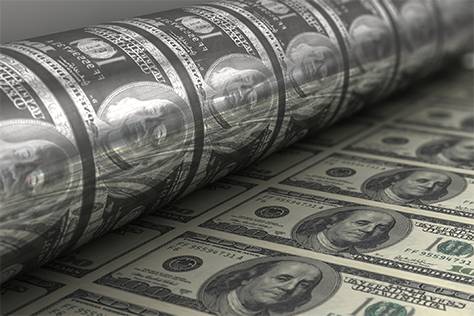The U.S. dollar traded near a three-month high on Tuesday as investors reassessed interest-rate expectations amid growing divisions within the Federal Reserve, while the British pound slipped after Finance Minister Rachel Reeves warned of “difficult choices” in her upcoming budget.
Markets turned broadly risk-averse, with equities falling, demand for government bonds rising, and traditional safe-haven currencies such as the yen and the Swiss franc holding firm.
Data gap leaves Fed and investors in the dark
Fed officials continued to issue mixed signals on the economic outlook and inflation risks as the ongoing U.S. government shutdown keeps key data releases on hold.
The central bank cut rates last week as expected, but Chair Jerome Powell cautioned that another reduction in December was “not a foregone conclusion.” According to CME’s FedWatch tool, traders now price a 65% chance of a December cut, down from 94% a week ago.
That shift supported the dollar, with the dollar index—tracking the currency against six major peers—rising above 100 for the first time since early August before settling near 99.82.
The pound fell 0.61% to $1.3057 after Reeves outlined fiscal headwinds including high debt, weak productivity, and persistent inflation. Michael Brown, senior market analyst at Pepperstone, noted that “sterling is repricing lower amid another round of strong headwinds to growth.”
The pound also weakened against the euro, which gained 0.3% to 87.98 pence, while the euro eased 0.2% versus the dollar to $1.149, close to a three-month low.
With risk appetite subdued, the Australian dollar declined 0.7% to $0.6495 after the Reserve Bank of Australia left rates unchanged at 3.60%, warning of possible further easing ahead.
U.S. government shutdown continues
As official data releases remain suspended, investors focus on private-sector indicators such as ADP employment data. The ISM manufacturing survey released Monday painted a grim picture, showing factory activity contracting for an eighth straight month in October amid weak new orders.
Powell’s cautious tone on December easing, combined with the Bank of Japan’s decision last week to keep rates unchanged, has supported the yen in recent sessions.
On Tuesday, the yen rose 0.4% to 153.56 per dollar after earlier touching its strongest level in eight and a half months. Finance Minister Satsuki Katayama reiterated that Tokyo is “closely monitoring” currency moves, as the yen nears levels that previously prompted interventions in 2022 and 2024.
President Donald Trump, who recently visited Japan, has repeatedly criticized countries for keeping their currencies weak to gain trade advantages—a stance that analysts say could make Japanese officials more cautious about direct action.
Jane Foley, head of FX strategy at Rabobank, commented, “Japan’s Ministry of Finance is among the most vigilant on currency stability in the G7. The new administration values its relationship with President Trump and is unlikely to risk that by pursuing policies that sharply weaken the yen.”


